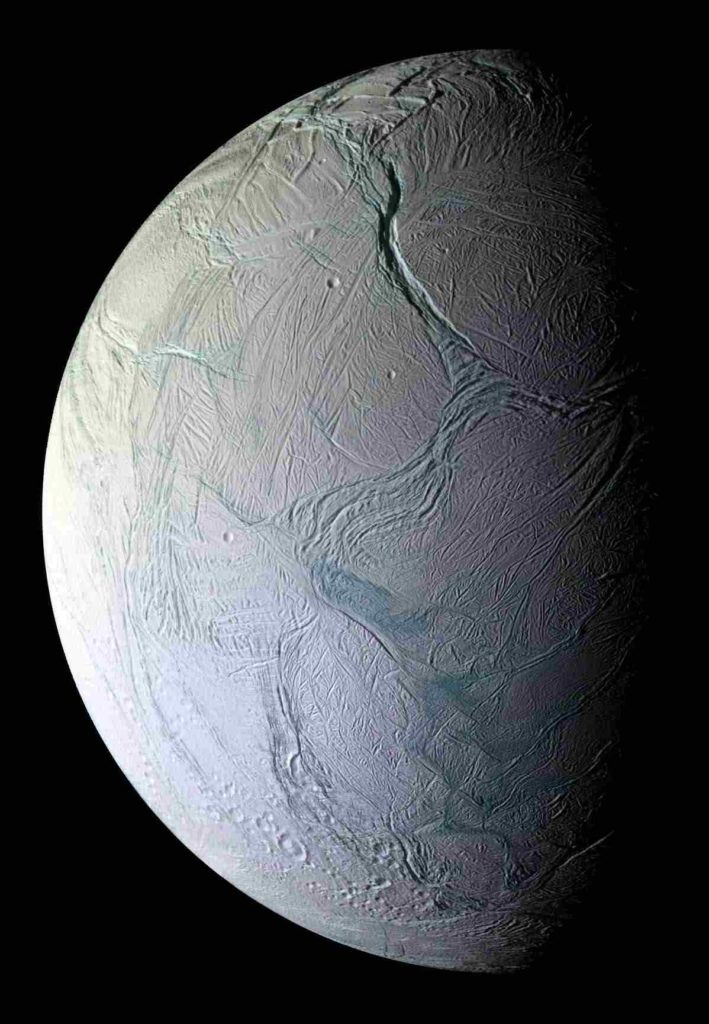UNITED STATES: The James Webb Space Telescope, known for its remarkable sensitivity and advanced capabilities, has recently made an astonishing discovery. While previous observatories have mapped jets of water vapor thousands of kilometers from Enceladus, Saturn’s moon, the James Webb Telescope has revealed a new story with its exquisite precision
Webb provides new insight on Enceladus
The telescope has spotted water vapor plumes erupting from the surface of Enceladus, with some plumes extending over 9,000 kilometers. This groundbreaking observation provides a unique view of the source and sheds light on the water supply system of Saturn and its rings.
Unveiling the hidden emissions
Until today, water emissions from the moon orbiting Saturn over such a huge distance have not been directly observed by scientists. This breakthrough observation from the James Webb Telescope opens up new avenues of research and could unravel the mysteries of the water supply within Saturn’s system.
By studying the characteristics and behavior of these plumes, scientists hope to gain insight into how this emission feeds the water reservoirs present in the entire system of Saturn and its rings.
Awe-inspiring discoveries
Lead author Geronimo Villanueva expressed his astonishment upon analyzing the data. He initially questioned his own findings when he detected a water plume more than 20 times the size of Enceladus itself. The water plume extends far beyond its release region at the southern pole, presenting an unprecedented view of this natural phenomenon.
The James Webb Telescope’s high sensitivity has provided astronomers with an extraordinary opportunity to witness the sheer scale and magnitude of these water vapor plumes.
Enceladus: An ocean world

Enceladus, the moon orbiting Saturn, is a captivating celestial body. It is approximately four percent the size of Earth, boasting a diameter of just over 500 kilometers. Beneath its icy outer crust and rocky core lies a reservoir of salty water, rendering Enceladus an oceanic world.
The moon’s surface is adorned with tiger stripes, which are crevices from where geyser-like volcanos erupt, expelling ice particles, water vapor, and organic chemicals. These fascinating phenomena provide further evidence of the moon’s active and dynamic nature.
The relentless eruption
The observations made by the James Webb Telescope have also quantified the eruption rate of water vapor from Enceladus. Astonishingly, the moon spews water vapor at a staggering rate of approximately 79 gallons per second. To put this into perspective, this volume of water could fill an Olympic-sized swimming pool in just a couple of hours.
Enceladus’ relatively quick orbit around Saturn, lasting only 33 hours, causes the moon and its jets to release water vapor continuously, leaving a halo-like trail in their wake. The abundance of water observed by the telescope is a testament to the vastness and intensity of these eruptions.
Webb’s revelation: The Water Torus
The water vapor emitted by Enceladus does not dissipate into space. Instead, it remains in the outermost ring around Saturn, aptly named the torus. Webb’s observations have directly demonstrated how the moon’s water vapor plumes contribute to this torus.
Approximately 30 percent of the water ejected from Enceladus remains within the torus, providing a constant source of water in Saturn’s system. This fascinating discovery has opened up new possibilities for studying the evolution and changes of water across Enceladus’ immense plume.
A gateway to new discoveries
Co-author Stefanie Milam emphasized the importance of the James Webb Telescope’s unique capabilities. The telescope allows researchers to track the movement of water across the huge plume of Enceladus over time.
This breakthrough discovery not only unravels the composition of the underlying ocean but also paves the way for new revelations and future discoveries. The James Webb Telescope’s continued observations will undoubtedly contribute to our understanding of this enigmatic moon and its role within the Saturnian system.
Also Read: NASA’s Juno Probe Reveals Startling Similarities in Lightning Processes Between Jupiter and Earth



